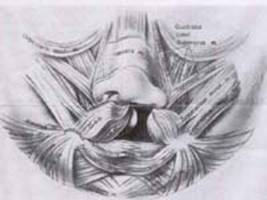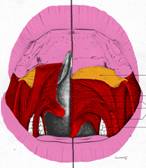The cleft is a splitting of tissue that occurs in the upper lip, alveolus and/or palate. The degree to which these structures are deficient, malformed or displaced depends on the form and severity of the cleft. The nose, which is not spilt, is severely affected by the split of anatomic structures at its base.
If the split is one side of the lip it is called a unilateral cleft lip and if the split is on both sides it is known as bilateral cleft lip.
The cleft lip may be associated with cleft of alveolus and palate. The cleft could also be isolated to the palate only. This is known as isolated cleft palate.
Unilateral Cleft Lip and/or alveolus and/or palate
The unilateral cleft lip defect can be complete or incomplete. It can be associated with cleft of alveolus and/or cleft of palate. The unilateral cleft lip defect is formed by the improper fusion of the orbicularis oris muscle and its accessory muscle on one side. In a complete cleft the whole orbiclaris oris muscle does not fuse but in an incomplete cleft part of the orbicularis oris develops normally.


Bilateral Cleft Lip and/or alveolus and/or palate
The bilateral cleft lip defect can also be complete or incomplete. It can also be complete on one side and incomplete on the other. It can also be associated with cleft of alveolus and/or cleft of palate. The bilateral cleft lip defect is formed by the non fusion of the orbicularis oris muscle over the premaxillary segment of the alveolus. In a complete cleft the whole orbiclaris oris muscle does not fuse but in an incomplete cleft part of the orbicularis oris develops normally.


Cleft Palate
Cleft palate may be present without clefting of the lip and alveolus. It may involve only the soft palate, the soft and part of the hard palate, or the entire palate, soft and hard. The clefts, especially complete clefts of the palate, may vary in width.
The cleft palate is divided into the hard palate and the soft palate as mentioned earlier. Cleft of the hard palate involves the bony shelf of the palate that does not fuse leaving a gap down the center of the palate. The cleft of the soft palate involves non-fusion of the soft palatal muscles, which are then abnormally attached.





